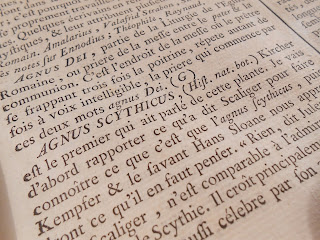 It must have seemed impossible. In the early 1800s, George Baxter awed England with his innovative color prints, easily mistaken for hand painted illustrations. Such detailed and vibrant prints had never been produced before on a press. And, they have not been reproduced with equal quality, leading some to suggest that Baxter kept his true methods secret.
It must have seemed impossible. In the early 1800s, George Baxter awed England with his innovative color prints, easily mistaken for hand painted illustrations. Such detailed and vibrant prints had never been produced before on a press. And, they have not been reproduced with equal quality, leading some to suggest that Baxter kept his true methods secret.Baxter’s patented technique is a two-step process. The first step is to print a key plate, which contains the details and shading of the final image. Usually, he used aquatint, which is an etching technique that can produce watercolor-like gradients of ink. After the key plate, the second step is to print several woodcuts layers. He often used between 4 and 20 different woodcuts, but sometimes up to 30. The final result was a color print with unprecedented depth and range of color.
In addition to his passion for engraving, Baxter was a devout Christian. He developed a relationship with the London Missionary Society’s publisher, John Snow, who inspired Baxter’s decade long venture into missionary printing. During this decade, Baxter produced many prints with religious themes and, on Snow’s advice, began selling his prints as separate objects.
Among these specimens was a handsome portrait of the popular missionary, John Williams. Williams was an active member of the London Missionary society and traveled extensively in Polynesia, spreading Christianity. In 1837, he published A Narrative of Missionary Enterprises in the South Sea Islands chronicling his missions. It featured Baxter’s portrait of him, which is a particularly significant print because it was the first of Baxter’s many color portraits. His religious portraits and other missionary prints were among his most popular works. The subject matter appealed to the Victorian enthusiasm for religion and support of the missionary efforts. Even the royal family raved about Baxter’s prints. John Williams, in particular, was very highly regarded, so Baxter’s prints of him sold well. Despite Baxter’s popularity, he was not a great businessman. Plagued by an inability to meet deadlines, he was unable to make a profit and went bankrupt.
Ask for Illus B334wi or Illus B334mu to see the color printing in person.
Posted for Marie Schwalbe, Thayer School.


